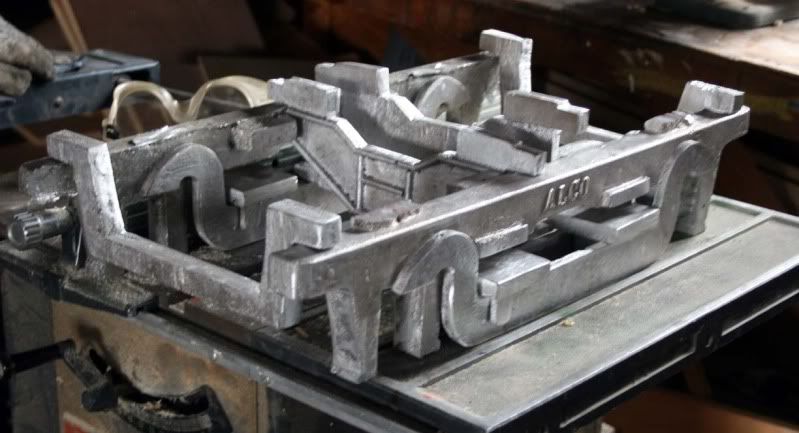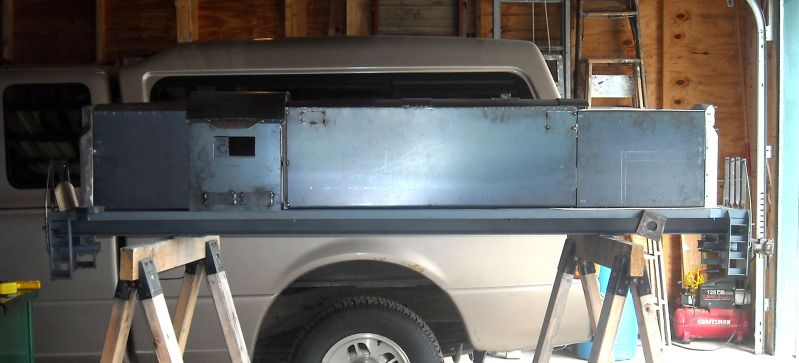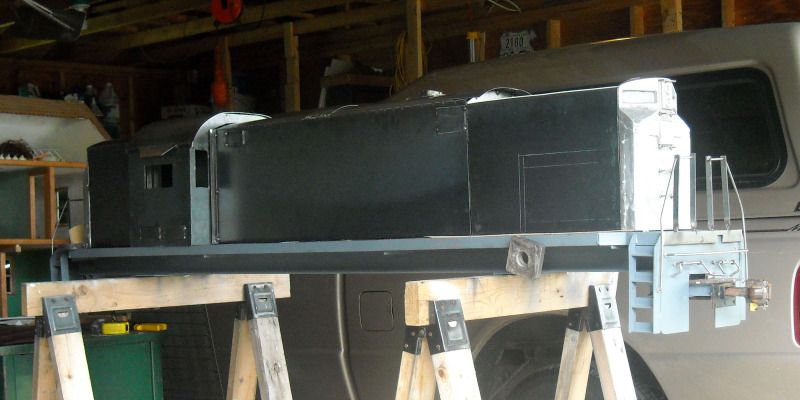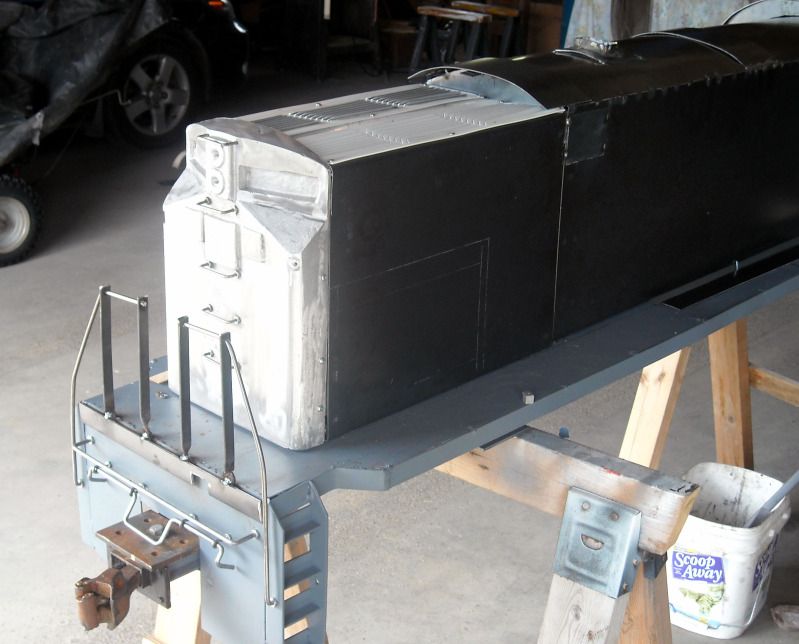by RGlueck
May 04, update. I've built and installed the short end, high-hood. This was where the LIRR C420's held steam generators for the commuter coaches they hauled for millions of miles.

The front doesn't look too different than before, but I've built the center section of the hood and added ventilator louvers to the top of the radiator fan compartment. I have not yet installed the 24 volt muffin fans I recovered from an old computer. I doubt they'll make much difference, but air circulation is a good thing around electronics. You might note the front side louvers are not yet fabricated. I have been searching for a way to step around that tedium, but haven't yet discovered it. The Devil is in the details, yes?
The engineer's side looks to set better than the fireman's side, but neither side is completely spread out, nor are they screwed down.


And of course, I need to get those tasks completed in order to fit the cab properly. There appear to be cracks and tiny gaps, no matter what is done to eliminate them. What kinds of putty or hard compound do you guys use to provide "make up"?

The front doesn't look too different than before, but I've built the center section of the hood and added ventilator louvers to the top of the radiator fan compartment. I have not yet installed the 24 volt muffin fans I recovered from an old computer. I doubt they'll make much difference, but air circulation is a good thing around electronics. You might note the front side louvers are not yet fabricated. I have been searching for a way to step around that tedium, but haven't yet discovered it. The Devil is in the details, yes?
The engineer's side looks to set better than the fireman's side, but neither side is completely spread out, nor are they screwed down.


And of course, I need to get those tasks completed in order to fit the cab properly. There appear to be cracks and tiny gaps, no matter what is done to eliminate them. What kinds of putty or hard compound do you guys use to provide "make up"?






